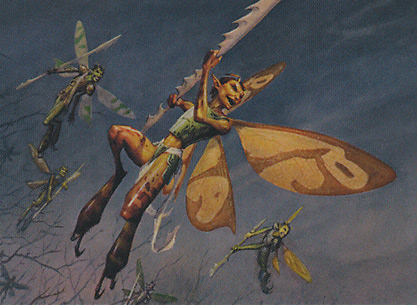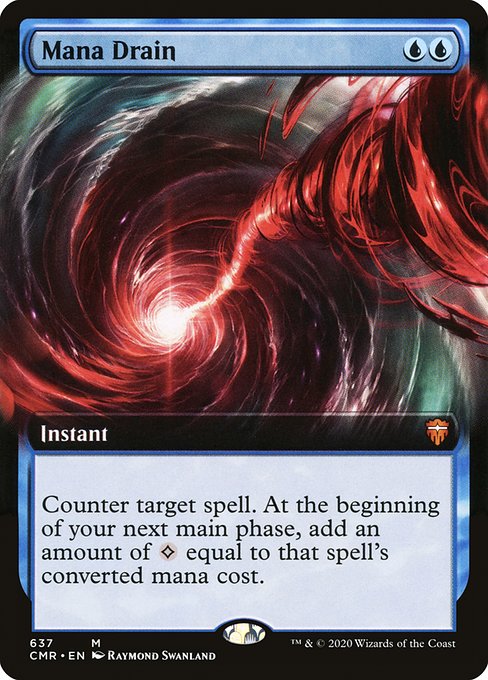Are you a Quiet Speculation member?
If not, now is a perfect time to join up! Our powerful tools, breaking-news analysis, and exclusive Discord channel will make sure you stay up to date and ahead of the curve.
The Masters reprint series have really changed the way that we all think about Magic singles finance. It used to be that one simply acquired the best, most powerful staples and held onto them. Time + Demand = Profit. Easy game.
Reprints really put a damper on the obvious strategy. Before, the passage of time created scarcity which added to the value of one's collection. However, when any card non-Reserved List card can simply be reprinted at any time and for any reason, well—time for a new strategy.
Reserved List: The New Obvious
Personally, I think the smartest money in singles investment are old cards and Reserved List cards. The reasoning behind this logic is pretty straightforward. Reserved List cards cannot be reprinted which makes them relatively safe and stable investments. In fact, it makes them great investments.
Singles with old cardface also have a distinct advantage of looking different. The older versions are classic and iconic which makes them better able to weather the storm of a reprinting. New-cardface Mana Drain or Aerathi Berserker will never have the same cachet as the originals.
Old cards and Reserve List cards are the best and safest investments in Magic and I stand by that statement.
The downside of investing in old cards and Reserved List cards is that the price to buy in is pretty high on a per-card level. There are different strategies for investing in old cards that have been discussed here by various authors, but the gist of most of these strategies is, "Slow and steady wins the race." There is some ability for cards to spike, but for the most part the cards just slowly, gradually tick upward and onward over time.
Investing in Reserved List cards isn't a "get rich quick" scheme, it's more of a "get even more rich slowly over time" strategy.
Low-Reprint Possibility
Okay, so let's say that you don't want to invest several hundreds or thousands of dollars into cards that will generate on average a few percent every year or so. What if you are looking for more of a get-rich-quick scheme? Or, at the very least a strategy where a smaller buy-in has a decent chance of making a larger percentage gain?
I think there is some game to be had in this area, but it isn't without risk. It is obviously more of a gamble, but that the upside is much higher and the buy-in lower.
My general strategy for this kind of investing is to look for cards with low price points that I can hold onto for a while, but also to focus on cards that I think have a generally low probability of being reprinted.
The obvious problem with this statement is the "generally low probability of reprint" part. I've already stated that anything can be reprinted for seemingly any reason. How can we know? Well, we don't for sure. We're just making educated guesses.
There are a few attributes I can point out that make a card ripe for a reprinting.
- The card already sees a lot of constructed play. Wizards wants to reprint cards that people want.
- The card has recently spiked. Cards that have spiked in the past six months carry a lot of demand, and demand sells packs.
- The card hasn't seen a printing in a significant amount of time. It's not a hard-and-fast rule (none of this is) but cards that haven't seen print in a while have more demand than ones that have been printed recently.
So, as a general rule, for this type of investment I'd be looking for cards that have a stable, low price tag; see fringe constructed play (but not a ton of it); and haven't see a printing in some time.
Commander & Casual Constructed
For the purposes of investing, "constructed play" also extends to casual formats such as Commander or any other fringe format. In fact, these might be the best formats to look for exactly the type of cards that I'm describing.
I don't play a ton of Commander. I play it some, but I'm not deeply invested in it as a format. I don't regularly try out new cards or build decks. I have the cards to build a few generals that I like and that is about the extent of my experience.
To get more insight I went right to the horse's mouth and started looking at Commander decks online to see what other people like to play. I looked for examples of cards that fit the description that I just laid out. Here are a few cards that stood out as having potential:
Here's an excellent example of what I was trying to describe personified. The card has been in that couple-of-dollars range for a zillion years. It hasn't seen a reprint, ever. It sees some fringe play in casual formats. It is kind of unique and interesting.
It's unlikely to ever be reprinted but it has that "fun, playable" quality that people enjoy. It's probably a good pick-up.
It's been a while since Return to Ravnica block came out. The card has basically been a buck forever. However, the card is quite great. I think this is a strong pick-up-and-hold right now. It could get reprinted in a Commander deck but it seems unlikely as it is part of a cycle where one is banned.
Another solid commander card that fits my mold. Cheap, but good. Relatively new printing that has rotated out of Standard. Fits the criteria.
Another great casual card. I've even seen this card played in Vintage and Legacy. It's basically a bulk rare. I think cards like these make really nice investments. I always pull them out of three-for-a-dollar boxes and stash them away. It fits the model.
These are the kinds of cards I'm often looking for as fringe investments. There are enough people playing such a style of Commander to build interest, but not so many that these cards really warrant or require a reprinting.
There are not enough people who want Knacksaw Clique to make a reprint necessary. However, the card is pretty cool and there are some people who want it. It hasn't been printed in ten years, which makes it kind of annoying to find, which makes the price tick up. As the price slowly ticks up people take notice and are like, "Wow, I didn't realize that was worth anything...." The price goes up again.
Another group of cards that fit into the model are the Commander deck cards. In general, these cards don't come out of the gate uber expensive. They are a mass-produced printing and aside from the one or two chase cards per deck these cards fall into anonymity. However, they do tend to tick upwards over time. I've noticed they are hard to get and stock at the LGS. People who buy the unique decks don't tend to sell the individual cards off and break up the set.
I wouldn't get caught up in how "good" or "bad" these spec targets are, but rather try to focus more on how the players who use them feel about them. A lot of Commander groups are more focused on playing the style of games their playgroups enjoy. AKA, not the most spiky, miserable combo match-ups imaginable. A lot of these medium-range cards become quite good once there's a gentleman's agreement not to do "unfun" stuff.
Keep in mind, all of this stuff is exactly why I don't play Commander—it's too complicated for me to personally navigate the world of fun or not fun. I play battle box "for fun" because it's always fun by my definition. Nevertheless, a lot of people like to create that Battlebox feeling by building their own wacky decks.
Dig for Value
I use this strategy a lot when I'm digging through three-for-a-dollar boxes at Grand Prix tournaments before or after the event when I'm bored. You are already getting the cards cheap, which works in one's favor, but when you have a strategy for predicting which cards have the most upward mobility it makes those investments even stronger. Look for cards that:
- Have fringe playability somewhere, even in casual formats.
- Have not seen significant price gain for an extended period of time.
- Have not seen a print for a while.
I think these are really solid parameters for thinking about cards with a decent chance of making you some money down the line. These are like scrappy underdog cards. They are decent enough that some people will find a way to play with them, but not so obviously busted that they are already expensive and/or demand a reprint.
It's a fine line to walk, but there is decent money to be made here. The other good news is that when you "hit" you hit pretty hard. Since the cards are relatively cheap to acquire, when they go up in value they often make tremendous percentage jumps. It's not that uncommon for these types of cards to double or triple your investment.
Anyways, this is yet another outside-the-box way to grind some value out of Magic.









